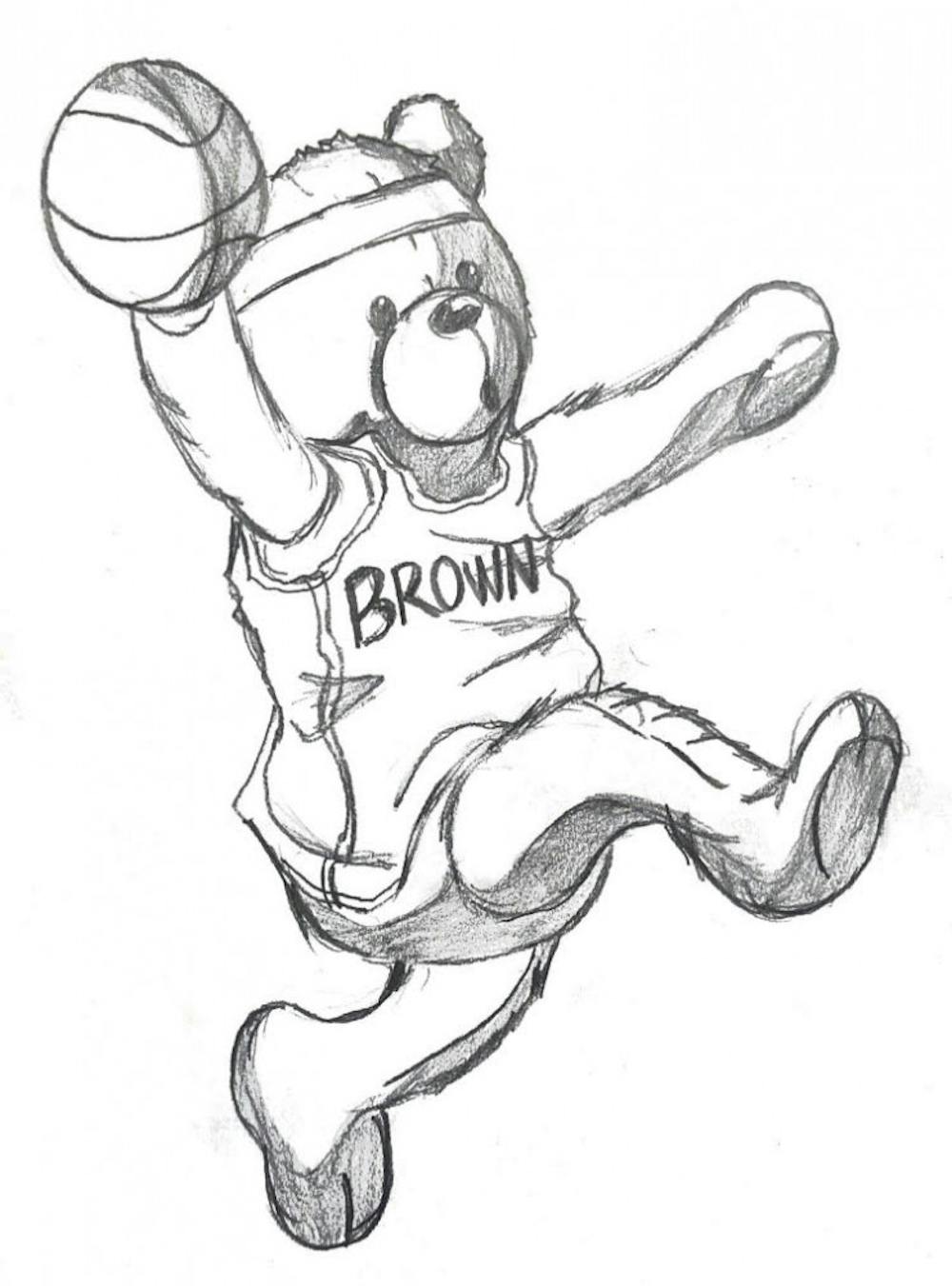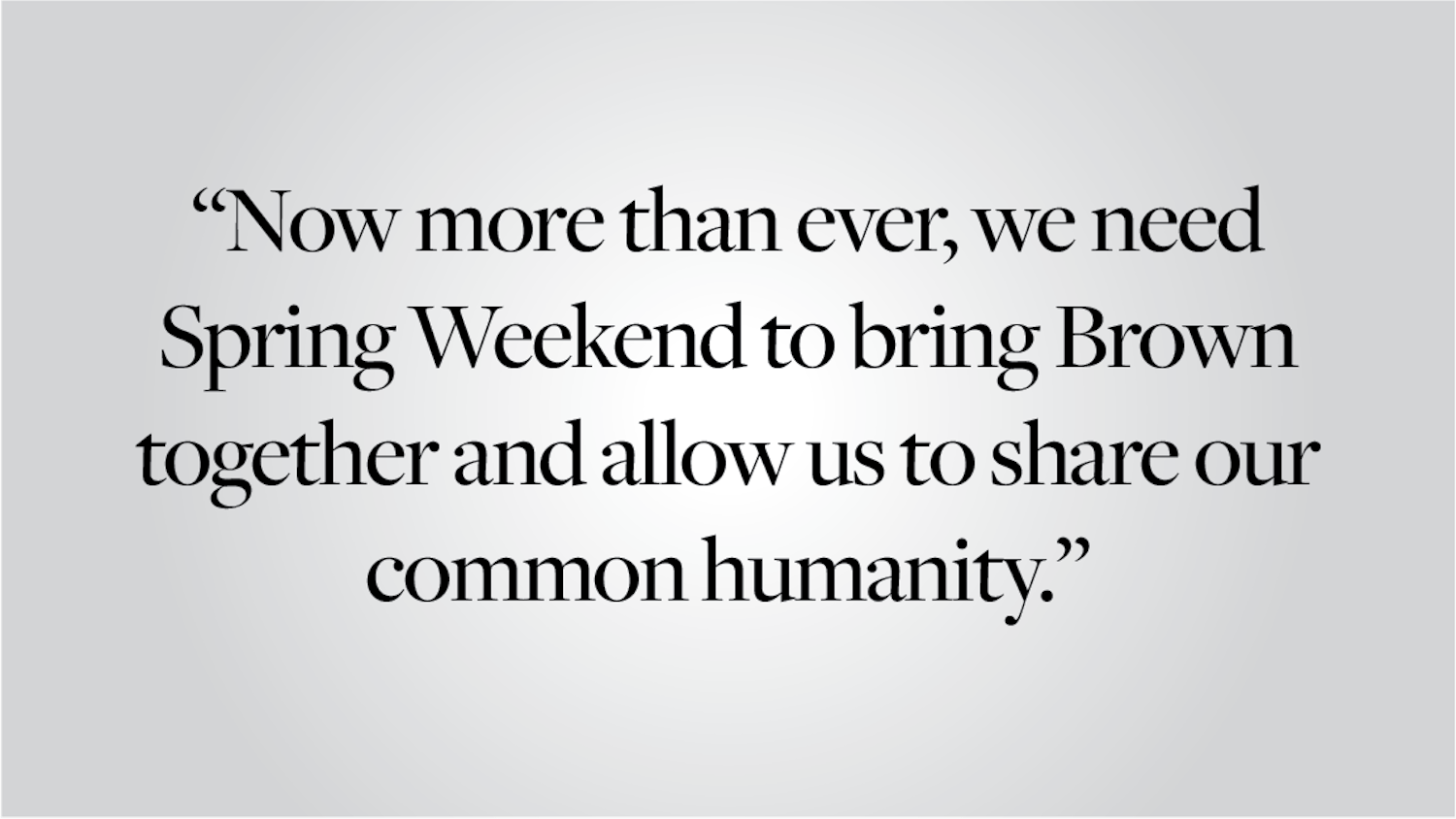With the start of the new week came the revival of an old debate: Is there value in Brown athletics? Many of us arrived to work last Monday to find multiple messages from friends sharing the opinion piece by August ’19, Kent-Daggett ’19 and Taswell ’19 entitled, “A slam dunk proposal for Brown athletics.” We will be blunt: It’s disappointing to see the disrespect that some Brown students show their peers who play sports.
We are still unconvinced that the op-ed we are responding to was 100 percent earnest. It may only be a half-serious and half-provocative piece, but it is certainly a half-baked take intended to revitalize the longstanding debate on the value of Brown athletics. We doubt even the basketball teams at Brown, who have earned a specific amount of respect and admiration from the authors, would support the plan to make the “Brown Athletic Department” the “Brown Basketball Department.” Our belief is that we need to nip this anti-athlete sentiment in the bud, as it is breeding an impression among student-athletes that the general student body finds their attendance at Brown to be undeserved, or even worse, fraudulent. Lest we forget, students at Brown would not be able to call themselves “Ivy Leaguers” without Brown’s financial contributions and student-athletes’ time commitment to Ivy athletics. The Ivy League is, first and foremost, an athletic conference — built on student-athletes’ efforts in practice and competition — that provides the student body social and professional prestige.
This is not written to criticize The Herald for publishing this piece, but to address the fact that fellow alums, current students and casual readers (as exemplified by comments on the op-ed) could not tell if the article was serious or if it was meant for the Brown Noser. It is disappointing to see three students attack members of 36 athletic teams in the belief that, in short, basketball is better than other sports and people like it more. Their op-ed dismisses out of hand the perspectives of student-athletes, who have each spent thousands of hours mastering their sport to compete at the highest levels of the NCAA, by simply stating, “Brown sports teams are bad. So bad.” (Incidentally, one of the authors of this piece, Tommy, was a multiple-time NCAA qualifier who finished Top 16 at NCAAs in swimming and went on to train and compete professionally with Michael Phelps post-graduation.)
Student-athletes represent nearly 13 percent of Brown students. We invite you to imagine a situation in which one student (or group of students) wrote an article criticizing a large swath of students without any pushback. Were someone to write about cutting Brown’s theater program because not every theater major becomes a Broadway star or Hollywood actor, the condemnation would be swift and powerful.
We readily admit $17.7 million is not a trivial amount of money. However, one can see after looking into the University’s annual expenditures that the athletic budget is a drop in the bucket compared to the billions spent on other equally worthy items.
$17.7 million is 56 percent of the sum that the University spent on Development and Alumni Relations in 2017-18 (there was no publicly available line-item budget for athletics published in 2018-19). That is, the University spends almost twice as much money trying to recruit alumni to give them more money than they do on current student-athletes. Graduate student support ($107.9 million) is over six times higher than Brown’s expenditures for athletics. The facts lay out the reality that Brown expends six times more on graduate students, who may stay for as little as one year, than athletes who typically stay for at least four years.
The value of athletics on campus, however, goes beyond the University’s ledgers. As written before, there are communal effects that sports, no matter their level of success, provide a community and city. Hockey and football games are frequently attended by Providence locals who have no connection to the University besides being woken up by students on Saturday nights. Are children from East Providence less inspired by the lacrosse abilities of Dylan Molloy ’17 than that of their favorite MLL player? Does hosting several NCAA-level tournament events not help the University recoup at least some of the $17.7 million spent to provide the opportunity for community in a University?
Another economics lesson: $17.7 million for athletics is an investment in the alumni network that Brown develops through its athletic program — and the returns are tangible. Last year, Tom McMullen ’62, a former varsity swimmer, donated $5 million to the University as part of the BrownTogether fundraising campaign. Athletes who go into finance on Wall Street, become doctors, shape politics, make music and beyond are willing and dedicated to a university that provided them the opportunity to attend and compete for an Ivy League school. Less than a week ago, David Given ’75 donated $3 million to endow the men’s ice hockey coaching position, stating, “I am deeply grateful for the experience that I enjoyed as a hockey player at Brown, both as a student and as an athlete. My objective with this endowment is to foster similar experiences for young men who love hockey and want an incredible college education.”
One of the least appreciated aspects of sports is the opportunities they provide to students who may come from disadvantaged backgrounds. Not every student-athlete comes from a family with a history of college education and professional schooling. The NCAA publicizes that 16 percent of student-athletes are first generation, and only 47 percent of these student-athletes strongly agreed they would have attended a four-year college had they not been an athlete. Of course, these statistics are not necessarily representative of Brown’s student-athlete population, but athletic recruitment could still be a valuable avenue for first-generation and low-income students. Athletic and academic gifts combined make the University accessible.
I would hope that 34-time participants in intramural sports and three-time intramural champions would see the benefits that sports can provide not only to oneself, but also to the Brown community and society at large. While the ultimate goal of all sports teams (especially at the NCAA Division I level) is winning, there are character-building traits, teamwork skills and other benefits achieved along the way. These values are embodied by the refrain, “It’s about the journey, not the destination.” The lessons learned from athletics are similar to those of any activity that builds work ethic, discipline and camaraderie: Successes are often attributed to hard work and failures can be overcome with persistence.
Student-athletes are just like students at Brown — the only difference is that the extracurriculars we participate in are varsity sports rather than intramurals, music, theater or other activities. Some appreciation for the time, effort and passion with which student-athletes represent the University would go a long way to healing this seemingly growing chasm between those who compete in sports and those who do not. We will finish this piece by reiterating a frequent refrain of student-athletes: We are Ever True.
Tommy Glenn ’14, Nick Johnston ’17, Gina Matsumoto ’16 and Chris Meyers ’16 all swam for four years on the varsity swim team and can be reached at thomas_glenn@alumni.brown.edu, nicholas_johnston@alumni.brown.edu, gina_matsumoto@alumni.brown.edu and christopher_meyers@alumni.brown.edu. Together, they represent nine Brown University swim team records, dozens of top-8 Ivy League finishes, over half-a-dozen Ivy League championship titles and multiple NCAA championship and Olympic Trial appearances.





